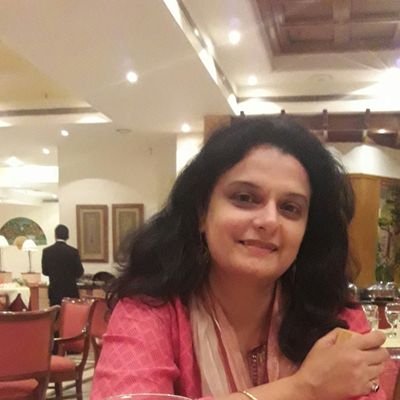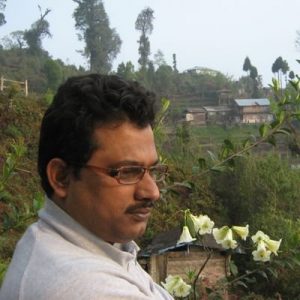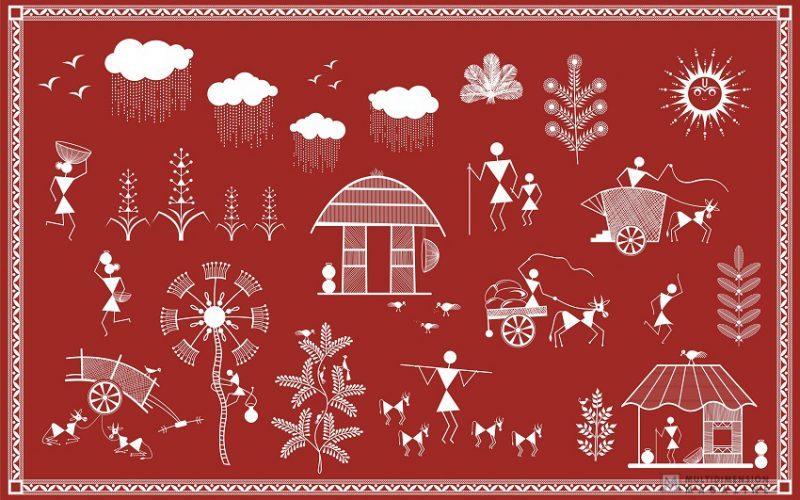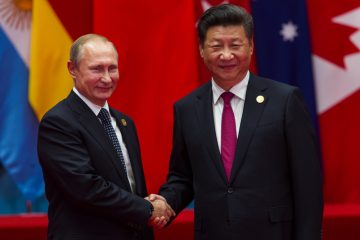Written by: Pooja Sharma
Co-authored by: Dr. Anjan Chakrabarti
Photo credit : shutterstock.com
The struggle for freedom in India has been a remarkable accomplishment in this era. However, the primary notion of freedom remained ignored that needs an answer “for whose freedom and from what”. The earlier articles “Illusive India” and “Independent India”, made an attempt signifying the veil describing the notion of independent India or its illusive unity.
Introspecting independent India, today’s India is found to be trapped under the clutches of deep-rooted inequality, socio-political unrest, conflicts between the centre and the state, the internal disputes amongst the various sections of society, classes, religion etc. As pointed out in the earlier article.Independent India has failed to address the challenges of poverty, unemployment, inequality climate change, increasing frequency of natural as well as health-related disasters.
The journey of retrospections and quest to identify India in its absolute form brings us to discover that part of India that maintained its originality and its uniqueness. It is that group or community that insulated itself from the socio-political transitions on account of change in governance. The so-called ‘tribal community’, the indigenous people living in different parts of India, have maintained their uniqueness all through the eras, irrespective of the changes in governance. The series of invasions of foreign forces on India, invasion of Arab in the eleventh century, the Turkish rule, Mongolian invasion during the reign of Tughlaq dynasty, invasion of Timur (1398-1399 A.D.), Mongolian invasion during Delhi Sultanateand finally the colonization of Britishers could not affect their social structure. The political systemisnot less to visualize the deep-rooted profound impact on the socio-economic and political base of India.
Thus, we encounter the “real heroes” of India in high altitudes of Western and Eastern Himalayas and sometimes in the heartland of Madhya Pradesh, Chhattisgarh, parts of Maharashtra, Andhra Pradesh and Orissa. This tribal community in India stretches from the remote villages that lay in the Indian Himalayan region to southernmost tip of India and from the farthest corner of North East India to the dunes of Rajasthan. They own their identity, their language, religion, festivals, cuisine, dance and music. This section of the indigenous community exceeds more than 500 in number and comprises 15% of the total population of the country .
Their lifestyle is completely distinct from the rest of the world, a way distant from the modern techniques. The life of these heroes that have emerged over the years of civilization, maintaining their authenticity is based on agriculture and handicrafts. They bring ethnicity and richness to Indian culture, representing real India.The living is quite hard for them, mostly dependent on hunting and trading products such as roots, fruits, leaves, honey, gum, tamarind. They use rural color with mud walls and thatched roof houses, earthen pots. Most of the India art and architecture, custom and ethnic handicrafts have evolved from the tribal culture and tradition. Over the years, these super heroes of India have contributed immensely to the exports and in maintaining the ethnic identity of Indian tradition and culture. Theirhandicrafts and ornaments such as beads, bangles and bracelets are appreciated and exported abroad at exorbitant prices.
The socio-political regime and governance structure have been so deep-rooted and unique that it survived every invasion and colonization. It is crucial to comprehend the governance system that could sustain its integrity and exclusiveness. These communities function based on consensus decision making, in which the group members develop and agree to support a decision in the interest of the whole community. This system is more collaborative, based on cooperation. It is a remarkably egalitarian, participatory and inclusive method of governance where each matter in every decision-making.Mahatma Gandhi also advocated such a consensus-based political system.
The concept of ‘empowering village economy‘ bears the genesis from the profound belief and notion prescribed by Gandhi and Kumarappa of building a non-violent social and economic order. They maintained the view that ‘the only path to true democracy in political life and peace among nations was a decentralised economic and political system where necessarily the rewards were moderate.’
Kumarrapa ratified the ‘autonomy of individuals’ being the most central concern of the process of development. This emphasizes the significance of each individual and the relevance of his growth and development. One cannot consider the development process complete or holistic unless each one matters. Kumarrappa also emphasized on moral, political economy and asserted that given that societies have inherent inequalities in both wealth and opportunities, it is essential that each individual is granted the basic amenities for reasonably good quality of life.
According to Mahatma Gandhi, a centralised method of production generates an accumulation of capital, leading to the concentration of wealth. The concentration of economic wealth implies competition leading to violence and consequently maintaining hegemony and supremacy over others. Therefore, the need to expand based on greed instigates more and more of a competitive environment for production and consumption. Facilitating and producing at large scale this process of production encourages warfare. Such a system would lead to coordination of raw material supplies, production and need to find markets for finished products would ultimately lead to imperialism and warfare.
A decentralized system of governance in the situation of scarcity of capital is the only plausible option. Further, in case of excess labour, the case of unemployment and underemployment, the centralisation would aggravate the problems all the more. Decentralisation method would be the best way of producing goods when raw material and markets are in the proximity of producing centres. This system would lead to far more equal distribution of wealth and also making people tolerant. This process of production includes distribution of wealth in a more equitable manner. A decentralized setting empowers each producer and makes him an entrepreneur, improves his standard of living, further uplifting the average intelligence of nation as a whole.
The indigenous tribal communities represent not only a peaceful consensus-based governance but also reflect exclusive social and community models functioning completely on environmentally sustainable methods of production and consumption. Dzumsa, a traditional institute of local management of North Sikkim and is in existence for more than 200 years. It is headed by two Pipons (Village headman) who are elected by the head of the families residing in Lachung for two years. Pipons nominate Gyapons who act as a messenger of Pipons. Deciding upon community policy, execution of public works, development projects, regulating the extraction of firewood for building houses, settling social disputes and law and order at village level in a democratic process are some major works carried on by the Dzumsa. Dzumsa regulates the dates of movements of gothwalas and grazing time, management of cutting trees, ensures planting new trees in place of cutting trees. The Dzumsa also controls the imposition of a fine to the errant gothwalas who failed to comply the grazing time or construct cattle sheds other than the area specified by the Dzumsa, and this is an ideal example of natural resource management by the indigenous people.
The survival of economies after the segregation from the globalised, interconnected economies are the case of Cuba which decently performed after the US embargo in 1960. It is worthwhile quoting the example of Island of Peace ‘Community of Ark’ founded in 1948 in France by Lanza del Vasta (1910-81) which is entirely based on Gandhian principles. The community functions on truth, love and tolerance and is a perfect example of the simple life. This community is a classic example which preferred to use simple tools and believed that complicated machinery is a product of human greed. It is this simple technology that benefits worker by constructing their physical, mental and spiritual health. In the process, the community disconnects itself with the modern economy propagating injustice towards the poor.
The community represents a self-sufficient energy system and effectively more renewable. Firewood cut from community’s forest was used for indoor heating, water heating and cooking. The community uses categorically energy-saving approach using no electricity while candles were used in indoor lighting, and use of cellars without refrigeration. The community also used other indigenous techniques like water-powered sawmill to generate electricity
Another example that is worth illustrating at this point is the functioning of village Mendha, a small village of Gondatribals in central India. It is the Dhanora tehsil of Gadchiroli district in the State of Maharashtra. Though it is very much in contact with the outside world, it has maintained its unique characteristic like non-existence of disputes and differences of opinion in the village, no problem of poverty, hunger or unemployment and no economic disparities. The village functions effectively based onthe unanimous decision of village community for taking critical decisions of village community under village assembly called gaon-samaj-sabhacomprising of all the adult villagers as its members. In the meeting of village assembly, it was decided to impose Rs.150 on the practice of cutting trees in the forest for fruits, leaves and branches or even honey. The villagers depend on forests for food and fuel and use biogas as a source of energy. Finally, this village serves as a remarkable example of people’s power. (Devaji Tofa)
As a result, it can be established that a non-violent, peaceful economy can be accomplished with decentralized settings, contributing to economic growth and development at a localised level, improving the standard of living of individuals ensuring a better quality of life. This setting, at the same time, generates the human value system among the individuals in the economy much capable of creating a non – violent, peaceful environment.
The valley of La-Chung is part of Chungthang sub-division of North District of the state of Sikkim and is having an elevation of 8160 ft. Considering the three significant components of agro-ecosystems viz., landscape, bio-climate and length of the growing period, La-Chung and its adjoining areas fall under sub-alpine and alpine zones. Transhumance or nomadic pastoralism and agro-pastoralism are the primary means of livelihood. One-third of the population La-Chung is dependent on pastoralism. Before the Chinese aggression in 1962, border trade was an alternative source of income for the people of Lachung.
Two-pronged strategies to ensure the pastoralists of La-Chung generally follow livelihoods. Milk produced by them is used to prepare butter, cheese, which is commonly known as churpi, dehydrated cheese or supari. They sell it in the local market. They mostly rear yak and sheep which provides not only milk but also meat (200-300 kg per yak), fur, dung manure, hides etc. Sale of yak and sheep also helps them to earn. Selling a yak makes them earn Rs. 4000-8000 for sheep they earn Rs. 600-1000. The fur, belly fur, moulted fur and horns of yaks are having multiple uses with commercial values. These generate added additional income to the pastoralist community of Sikkim. The economy of the pastoralists of Sikkim evolves around the animals and considered to be the only source of income. The preserved smoke-dried meat mostly supplements their food requirement for winter. The women who stayed back at their homestead generally grow a potato, wheat, barley in winter and cabbage, pea, radish etc. in summer that supplements the requirement for vegetables.
Therefore, agro-pastoralism practised in La-Chung valley ensures a sustainable subsistence livelihood for the nomadic pastoralists. It is a livelihood mechanism that does natural resource management through traditional knowledge and does not degrade nature. Timber is used for the construction of houses and cooking purposes. However, strong regulation advocated by the Dzumsa does not allow the forest to degrade. The strong sense of conservation of these nomadic pastoralists of Lachung valley has historical antecedents. Nature and rulers were an integral part of the ancient history of Sikkim. The Namgyal dynasty that ruled Sikkim was the follower of Tibetan Buddhism; their policy of governance has a close link with conservation and preservation of nature.
The regulatory role of Dzumsa is also having paramount importance towards natural resource management. The century-old traditional knowledge base is closely related to the philosophy of conservation of nature and staying in harmony with nature. Gothwala system practised in Lachung valley is working in conformity with the definition of sustainable development which cautioned us that on the long run, human and natural systems could not be economically viable unless they are also ecologically sound and socially responsible. However, modern development discourse has not only ignored this century-old way of life practised by the Himalayan tribes but also considered them as a threat to the sustenance of the environment.
Pastoralism is a source of livelihood for the quasi-nomadic people residing in the Himalayas. A symbiotic community evolves taking herds and herdsmen together, and pasture provides the sustenance to both. Pastoralism practised in the Himalayas is termed as transhumance. Transhumant people are nomadic on the one hand and transitionally or marginally sedentary on the other because of their seasonal cyclic movements and utilization of resources in a rotational manner. The cyclical movement is such that in the summer, they shift from dry and warm regions to sodden and cold mountains. The movement gets upturned during the winter. The entire cyclical movement of herdsmen along with their herds accomplish the twin objectives of ensuring accessibility of grass as fodder for the animals and allowing the grass to revive. Use of dung of the animals helps the soil to replenish its fertility. The exercise is an example of natural resource management based on traditional ecological knowledge.
Finally, it is well established that long way we have evolved through all invasions to find our India best embedded in the indigenous tribal communities who have successfully sustained themselves overtime. The real India manifests in their culture and traditions, their art and architecture bringing ethnicity and pride, fostering natural and sustainable ways and methods. Their evolved socio-economic systems are the present live models of sustainable development goals of equality, inclusivity, environmentally friendly production, clean energy systems and peaceful governance.
https://www.tourmyindia.com/blog/the-indigenous-colour-of-india-the-indian-tribes/
 |
Pooja Sharma Assistant Professor, Department of Economics, Daulat Ram College, University of Delhi |
|---|---|
 |
Dr. Anjan Chakrabarti Associate Professor, UGC-Human Resource Development Centre The University of Burdwan |
Related Articles
INDIA – Illusive Unity ?
Independent India? : Time For Introspection





